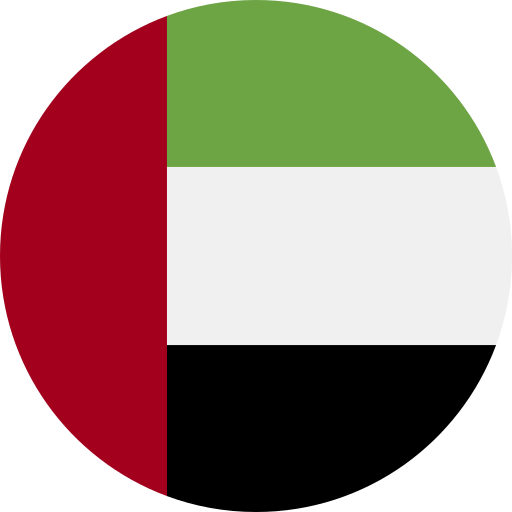Key Takeaways
- Historical Significance: Arabic originated over 1,500 years ago and has evolved through key milestones, including the rise of Islam and the Islamic Golden Age, establishing it as a vital literary and cultural language.
- Cultural Influence: The Arabic language serves as a bridge to understanding diverse cultures, particularly in the Middle East and North Africa (MENA), where it embodies rich traditions in literature, music, and art.
- Economic Opportunities: Proficiency in Arabic opens doors to lucrative job prospects in major industries like finance, oil, and tourism across Arab countries, making it a valuable asset for international business dealings.
- Modern Trends: The rise of technology and social media is transforming how Arabic is used globally. Digital platforms facilitate real-time communication among speakers while enhancing learning opportunities through interactive applications.
- Educational Growth: Many universities now offer programs dedicated to Arabic studies. Online courses expand access to learners worldwide, promoting bilingual education and preserving regional dialects.
- Global Presence: As globalization continues to grow, so does the spread of Arabic beyond its traditional regions into Western countries where immigrant communities thrive and educational demand increases.
Have you ever wondered how the Arabic language has woven itself into cultures around the world? From bustling markets in Morocco to modern skyscrapers in Dubai, its influence is undeniable. As globalization continues to break down barriers, more people are discovering the beauty and richness of Arabic.
In today’s interconnected world, understanding Arabic isn’t just about learning a new language; it’s about unlocking doors to diverse cultures and opportunities. With millions of speakers and a growing presence in international business, education, and technology, the spread of Arabic offers unique advantages for anyone willing to embrace it. So why not dive deeper into this fascinating journey and explore what makes Arabic so globally relevant?
Historical Context of Arabic Language
The Arabic language carries a rich history that reflects its profound influence globally. Understanding its origins and key milestones provides insight into its current significance.
Origins and Development
Arabic originated in the Arabian Peninsula over 1,500 years ago. It evolved from Proto-Semitic roots, showcasing unique dialects influenced by geography and culture. Classical Arabic emerged with the Quran’s revelation in the 7th century, solidifying its role as a literary and religious language. The spread of Islam facilitated Arabic’s expansion across North Africa and parts of Europe, establishing it as a lingua franca for trade and scholarship.
Key Historical Milestones
Several historical events shaped the trajectory of Arabic:
- 7th Century: The rise of Islam led to widespread adoption across diverse regions.
- 8th – 10th Centuries: The Islamic Golden Age fostered advancements in science, philosophy, and arts, with Arabic serving as the primary medium for these developments.
- 12th Century: Translations of Greek works into Arabic contributed significantly to European Renaissance ideas.
- 20th Century: Modern Standard Arabic became standardized through education systems, media, and literature.
These milestones underscore how deeply intertwined Arabic is with global cultural exchanges.
Factors Contributing to the Spread of Arabic Language Globally
Several factors contribute to the global spread of the Arabic language, enhancing its presence across various domains and cultures.
Religious Influence
Religious significance plays a vital role in spreading Arabic worldwide. The Quran, regarded as the holy book of Islam, is written in Classical Arabic. Millions of Muslims around the globe study this text in its original form for spiritual and educational purposes. This devotion encourages non-Arabic speakers to learn Arabic, fostering cultural exchange and understanding. Additionally, Islamic institutions often conduct lessons in Arabic, further promoting its use among diverse populations.
Economic Opportunities
Economic growth in Arab countries significantly boosts interest in learning Arabic. The Middle East boasts major industries such as oil and gas, finance, and tourism that attract international business people. Proficiency in Arabic opens doors to lucrative job opportunities and partnerships within these sectors. In addition, companies seeking to expand into Arab markets prioritize employees who can communicate effectively with local clients and partners. As a result, many individuals pursue language courses or hire tutors to enhance their skill set.
The unique blend of religious influence and economic prospects cultivates an environment where learning Arabic not only enriches personal knowledge but also aligns with professional aspirations.
Regions Impacted by the Spread of Arabic Language
The Arabic language has made a significant impact across various regions globally, shaping cultures and fostering connections. Understanding these areas reveals how Arabic continues to influence communities.
Middle East and North Africa
Arabic serves as the primary language in the Middle East and North Africa (MENA) region, connecting over 300 million people. Countries like Egypt, Saudi Arabia, and Morocco showcase diverse dialects that enrich local cultures. In this area, Arabic is not just a means of communication; it embodies history, tradition, and identity. The cultural heritage includes literature, music, and art deeply rooted in the language. Additionally, with numerous educational institutions teaching Modern Standard Arabic alongside local dialects, individuals gain access to broader opportunities in business and academia.
Western Countries
In Western countries like the United States and France, Arabic’s presence has grown due to increasing immigration and globalization. Communities establish vibrant cultural hubs where Arabic is spoken daily. Educational programs offering courses in Arabic attract students eager to learn about its significance in global affairs or pursue careers involving trade with Arab nations. Furthermore, organizations seek bilingual professionals who can navigate multicultural environments effectively. This demand highlights how learning Arabic opens doors for personal growth while enhancing professional prospects in various sectors such as diplomacy and international business.
Embracing the spread of the Arabic language fosters connection among diverse populations while promoting understanding across different cultures worldwide.
Modern Trends in Arabic Language Usage
Arabic language usage is evolving rapidly, influenced by globalization, technology, and cultural exchanges. Understanding these modern trends helps appreciate Arabic’s role in today’s world.
Technology and Social Media
Technology reshapes how you engage with the Arabic language. Social media platforms like Facebook, Twitter, and Instagram facilitate real-time communication among Arabic speakers worldwide. You can find hashtags trending in Arabic that connect diverse ideas and cultures. Content creators often produce videos and podcasts in Arabic to reach wider audiences, showcasing voice talent from various backgrounds. This rise of digital content increases the demand for native speakers who can provide authentic voiceovers for advertisements or educational materials.
Additionally, applications designed for language learning make it easier than ever to practice your skills interactively. Tools such as Duolingo or Rosetta Stone offer lessons tailored to different levels of proficiency, enhancing your ability to communicate effectively in Arabic.
Educational Initiatives
Educational initiatives play a significant role in promoting the use of the Arabic language globally. Many universities now offer programs focusing on Arabic studies that include courses on linguistics, literature, and translation. These programs attract students eager to explore career opportunities as voice artists or educators fluent in both Arabic and other languages.
Moreover, online platforms have emerged that provide accessible resources for learning Arabic at all levels. Websites like Coursera or edX feature courses taught by experienced instructors who guide you through grammar rules and vocabulary expansion while emphasizing cultural context.
Organizations also promote bilingual education through community classes aimed at preserving dialects unique to specific regions within Arab-speaking countries. These efforts foster an appreciation for linguistic diversity among learners while building bridges across cultures.
By engaging with these modern trends—whether through technology or educational initiatives—you enrich your understanding of the Arabic language’s significance today.
Conclusion
The global spread of Arabic language reflects its deep cultural significance and economic relevance. By learning Arabic, you’re not just acquiring a new language; you’re opening doors to rich traditions and valuable opportunities.
As the world becomes more interconnected, understanding Arabic can enhance your professional prospects while fostering meaningful connections across cultures. Embracing this language allows you to engage with diverse communities and participate in vibrant discussions shaping our future.
Whether for personal growth or career advancement, exploring the Arabic language is a journey worth embarking on.
Frequently Asked Questions
What is the significance of the Arabic language globally?
The Arabic language holds immense global significance due to its millions of speakers and cultural influence. It connects diverse communities across various industries, enhancing opportunities in business, education, and technology while fostering cross-cultural understanding.
How did the Arabic language evolve over time?
Arabic evolved from Proto-Semitic roots over 1,500 years ago. Key milestones include the emergence of Classical Arabic with the Quran’s revelation in the 7th century and its standardization into Modern Standard Arabic in the 20th century.
Why is learning Arabic beneficial today?
Learning Arabic opens up numerous opportunities for personal growth and professional advancement. With economic growth in Arab countries and a demand for bilingual professionals, proficiency in Arabic can lead to lucrative job prospects.
What role does religion play in promoting Arabic learning?
The Quran’s religious significance encourages millions of Muslims to learn Arabic for spiritual understanding. This devotion fosters cultural exchanges and educational initiatives within Islamic institutions around the world.
How has globalization impacted the spread of Arabic?
Globalization has increased interest in learning Arabic through immigration and digital communication. Social media platforms facilitate real-time interactions among speakers, driving demand for native proficiency across cultures.
Where are regions most affected by the spread of Arabic?
The Middle East and North Africa (MENA) are central to Arabic’s spread, connecting over 300 million people through shared history and identity. Additionally, Western countries have seen a rise in vibrant Arab communities due to migration.
What modern trends influence contemporary use of the Arabic language?
Modern trends include an increase in digital content creation and social media usage among Arab speakers. Educational programs at universities also promote accessible resources for learners interested in studying the language today.







